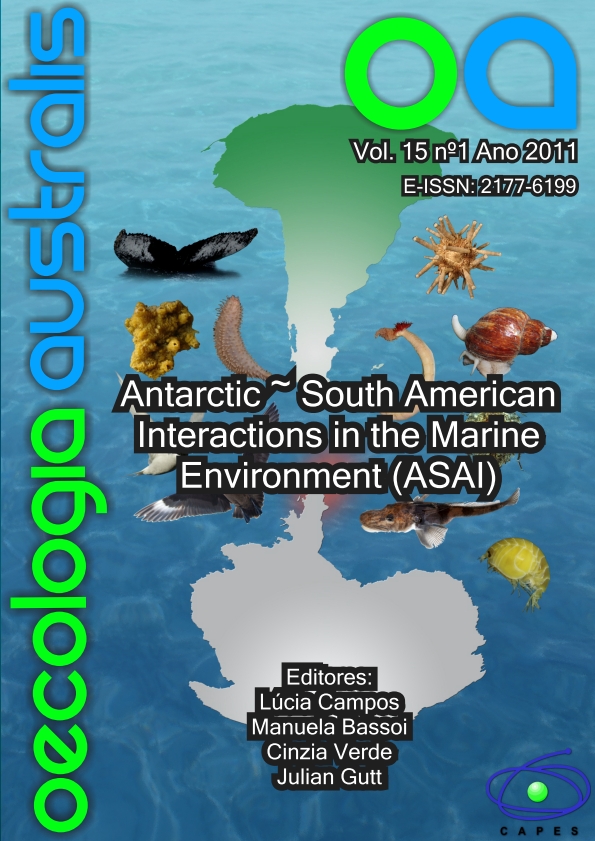SOUTH AMERICAN AND ANTARCTIC INTERACTIONS IN THE MARINE ENVIRONMENT - BIOLOGICAL RELATIONSHIPS, GENERAL RELEVANCE AND RESEARCH PERSPECTIVE
Keywords:
Biodiversity, interdiscipinary studies, ecosystem functioning, predictions.Abstract
The relevance of faunistic intercontinental comparisons is discussed here in the context of the past and current projects related to Antarctic biodiversity research. Some of these have focussed on questions regarding Antarctic isolation and evolutionary pathways between South America and that continent, such as the ‘Investigación Biológica Marina en Magellanes relacionada con la Antártida'(IBMANT), ‘Ecology of the Antarctic Sea Ice Zone' (EASIZ), and more recently the ‘Evolution and Biodiversity in the Antarctic' (EBA) as well as the ‘Census of Antarctic Marine Life' (CAML) and the ‘Scientific Committee on Antarctic Research Marine Biodiversity Information Network' (SCARMarBIN). The Latin American subproject of the ‘Census of Antarctic Marine Life' (LA-CAML) provided a landmark to collect data on the biodiversity and life history for all groups of organisms ranging from microbes to endotherms. In addition to such fundamental knowledge the application of molecular techniques and highly sophisticated methods to study macroecological processes are necessary to better understand ecosystem functioning and large-scale comparisons in the southern hemisphere, especially between South America and Antarctica. More cooperation between scientists and more interdisciplinary approaches are required to develop reliable projections for the future of our biosphere under anthropogenic stress and its ecosystem services.


